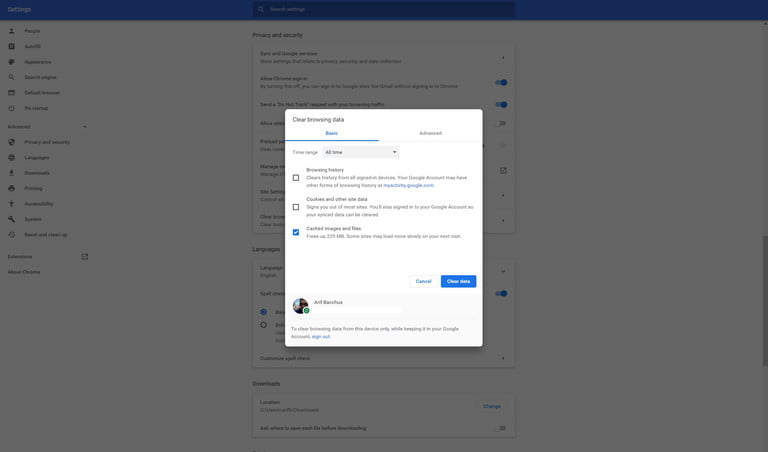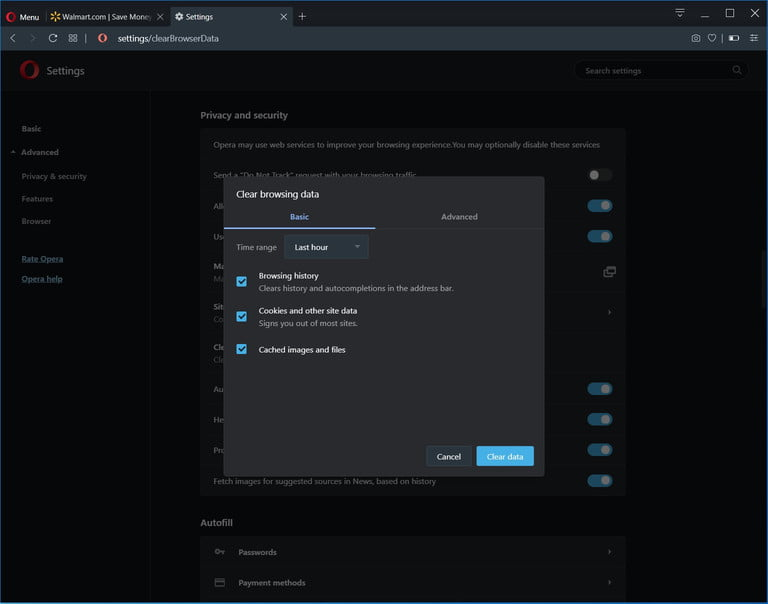Why you might want to clear your Cache
Clearing your cache might not be completely necessary, nor need to be done often. However, clearing your browser’s cache can prove fruitful for several reasons. First off, purging the stored data in your cache automatically forces your browser to seek and retrieve the most recent webpage elements instead of recycling the same old components, whether they’re up-to-date with the developer’s standards or not.
Furthermore, resetting your cache will potentially help in the event of 404, 502, and other errors that may possibly result from a corrupt cache, and clear any private data you have stored in the form of login IDs, passwords, and additional sensitive information you’d rather not save on your machine. It’s also a simple trick you can employ to shed any unnecessary data, which could slow down your browser.
Clear the cache in Google Chrome

Step 1: Launch Google Chrome and click the Chrome menu icon represented by three horizontal bars in the upper-right corner of the browser window, and click Settings near the bottom of the resulting drop-down menu.
Step 2: Then, click the link for Privacy and Security in the left sidebar. You’ll then want to click that and look for the Clear browsing data option. Click it, and make sure the box for cached images and files is checked. You can uncheck the other boxes for browsing history or cookies and other site data if you only want to clear the cache.
Clear the cache in Mozilla Firefox

Step 1: Open settings — Open Mozilla Firefox, click the button with three bars in the upper-right corner of the browser window and select Options from the resulting drop-down menu.
Step 2: Clear the browser cache — Click the Privacy and Security tab located on the right side of the navigation bar and head to the Cookies and Site Data section underneath. Click the button labelled Clear Data. You’ll want to make sure that the option for Cached Web Content is checked, and then press Clear. You can also check the box next to Delete cookies and site data when Firefox is closed to do so automatically when you close the browser.
Clear the cache in Internet Explorer

Step 1: Open settings — Launch Internet Explorer, then click the gear-shaped Tools icon in the upper-right corner of the browser window and select Internet options from the resulting drop-down menu. This should bring up the General options tab, but if not, click the leftmost tab in the options window to access it.
Step 2: Clear the browser cache — Click the grey Delete … button within the Browsing history section near the bottom of the pop-up window, then check the box labelled Temporary Internet files and website files — along with any other browser data you wish to clear — and click the grey Delete button in the bottom-right corner.
Clear the Cache in Safari

Step 1: Open settings — Launch Safari, click Safari in the upper-left corner of the main menu bar, and select the Preferences option near the top of the drop-down menu. Then click the Advanced tab located in the top navigation bar and check the box directly on the bottom that says Show Develop menu in menu bar. This will add a new menu to Safari by default.
Step 2: Clear the browser cache — Click the Develop menu near the middle of the main Safari menu bar and select the Empty Caches option.
Clear the cache in Opera

Step 1: Open settings — Launch Opera, click the Menu button in the upper-left corner of the browser window, and select the Settings option from the drop-down menu.
Next, click Advanced in the bar to the left-hand side of the screen. You’ll then want to click on the Privacy & security panel located on the left side of the resulting window and click the gray Clear browsing data… button near the top of the Privacy section.
Step 2: Clear the browser cache — Check the box labelled Cached images and files, along with any other browser data you wish to clear. Then, select the time frame you want to erase — to completely clear the cache, choose the beginning of time — from the drop-down menu. Afterwards, click the grey Clear browsing data button in the bottom-right corner.
Clear the cache in Microsoft Edge

Step 1: Open settings — Click the button showcasing three dots in the upper-right corner and select Settings from the resulting drop-down menu.
Step 2: Clear the browser cache — Click the option for Privacy and Security and then choose the button labelled Choose what to clear. Doing so will bring up a checklist of things you can remove, including browser history and cookies. To remove your browser cookies, check the box labelled Cached data and files and click the Clear button.
Clear the cache in the new Microsoft Edge
Step 1: Launch the new Microsoft Edge browser and click the menu icon represented by three horizontal bars in the upper-right corner of the browser window, and click Settings near the bottom of the resulting drop-down menu.
Step 2: Click Privacy and Services on the left-hand side of the screen. You’ll then want to look for the Clear browsing data option on your screen and click the blue Choose what to clear button. After clicking that, choose All Time from the Time Range and make sure Cached images and files is checked. And then click the blue Clear now button.
